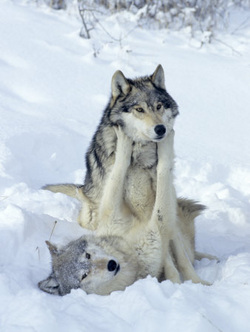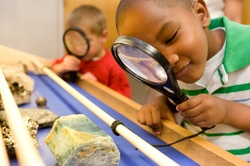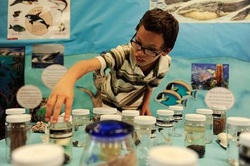
Wolves are a widely studied species in Yellowstone.
Because wolves were reintroduced to the park immediately after an absence of pretty much 80 years scientists spend a great deal of time studying the animals' distinctive behavior.
"Our understanding of wolves is vast because of decades of analysis all over the world" mentioned Tom Oliff chief of natural resources.
"The ability to oversee wolves inside the wild has been difficult plus the knowledge gained by means of direct observations of behavior is invaluable to understanding the species."
The ideal solution to study wolf movement is from the air.
The Raven's Eye View of Yellowstone can be a component of the Aerial Eyes project that is supported by Yellowstone Park Foundation (www.ypf.org) in cooperation with Canon U.S.A.
The Eyes on Yellowstone program is produced achievable by Canon it provides funding and digital technologies to support an array of park resource management and education programs.
Working with a Canon EOS 20D digital camera body with a 100-400EF lens (f 4.5-5.6) as a scientific tool wolf biologists Doug Smith and Dan Stahler are changing the way quantitative and qualitative wolf data are gathered and studied.
The scientists have documented numerous behavior-from hunting prey to raising pups to interacting with various species throughout the park.
The details even so remain tough to determine with the naked eye especially when employing the routine monitoring approach of aerial radio tracking from fixed-wing aircraft flying high overhead.
The digital equipment has helped revolutionize this research.
High-resolution digital photographs that can be taken various hundred feet above ground and later enhanced have in a short time opened new windows to studying wolf ecology and behavior.
"This is a key breakthrough for wolf study supplying first-of-its-kind outcomes" stated Stahler.
"Of particular value is the identification of individual wolves and the function every single plays in the pack even though engaged in different activities.
Determining the presence and quantity of pups in a litter or whether or not a certain member of the pack is still alive, can now be readily discernable through studying photographs taken with excellent digital camera equipment."
Digital photography has changed science, and it has allowed Yellowstone scientists to gather data never obtained by any other wolf study project. The mixture of digital imaging and enhanced lens quality are key scientific tools to assist study and recognize wolves.
A pack of wolves in Yellowstone is monitored by aircraft equipped with cameras.

There are plenty of unique 8th grade science fair project concepts which you could use for your next assignment these are employed based on the type of project that you simply wish to make and they are essentially categorized in the sciences of physics, chemistry, biology, computer science, social sciences and environmental sciences.
Each and every of your projects will need to have a guideline of ways to use it and tips on how to prove its efficiency.
Make sure you know that a lot of interesting actual projects have developed from good concepts for science projects.
The ideal part about a science fair project is which you may have your really own group of science fair topic suggestions and then you just require to choose 1 and start working on a project that will enable you to compete in this activity which have formed component of education for a lengthy time.
A really excellent strategy for acquiring 8th grade science fair project tips will probably be described in the next few lines if you are interested in understanding the basics of a science fair project.
The very first factor which you really should do is to choose 1 topic of the classification which was stated above and once you have accomplished that you need to have to pick one of the diverse subtopics that could be applied to the general subject which you just selected.
It is actually really fascinating to ask yourself a question about how points function and if there are actually some questions which you can not answer then those are pretty very good concepts for science projects.
One more great technique for choosing science fair subject concepts are going to be to read the newspaper and watch television see what intriguing aspects of life are developing nowadays and make an effort to explain them on a science fair project.
That way you might get outstanding 8th grade science fair project concepts and with them you'll be capable of winning a terrific prize.
And you may have an superb group of tips for science projects.
Keep in mind that for choosing the top 8th grade science fair project ideas your choice have to be not only a great question but a productive project also implies that you could be giving the answer by performing an experiment.
So it is actually incredibly crucial that you prepare yourself with all of the needed materials when you have reduced to 1 selection from your complete group of very good ideas for science projects.
Make an effort to make the project by yourself ask as little help as you are able to and you can feel that your 8th grade science fair project tips had been amazing and that you accomplished every thing by yourself it's going to leave you with a sense of accomplishment that can't be equaled should you win using the support of other people.

Obtaining kids interested in science at an early age is pretty essential.
It is less complicated than you believe.
Science doesn't need to be one thing mysterious.
It truly is happening all around us, and you may use everyday points to encourage your children's interest and knowledge.
Most parents think that they can't support their children with science.
But you do not require a advanced scientific degree to teach young young children science.
All you'll need is really a willingness to attempt to observe the globe, and to take the time to encourage their natural curiosity.
You may assist by having a positive attitude toward science yourself.
Then start off simply by asking your child questions concerning the items you see each day.
Why do you think that happened?
How do you feel that works?
After which listen to their answer without having judging it or judging them.
Listening without judging will improve their confidence and allow you to ascertain just what your child does or does not know.
You may turn each day activities into science projects.
By way of example don't just comment on how bright the moon is one night.
Ask questions about why it is brighter tonight why does it alter shape, and so on.
It is possible to observe the moon's phases all through a month and turn that activity into a science project with out even mentioning the words "science project".
For a child that likes cooking observe how milk curdles after you add vinegar or how sugar melts into syrup.
Attempt baking a cake and asking why does the cake rise?
What happens if you forget to put in some ingredient?
Voila! Instant science project notion with out being intimidating to you or your child.
Diverse children have unique interests so they have to have diverse sorts of science projects.
A rock collection may possibly interest your young daughter but your older son may require some thing a lot more involved.
Fortunately it's not challenging to find a lot of fun projects.
Understanding your child is the very best approach to obtain enjoyable understanding activities.
Here are some much more guidelines:
- Pick out activities which are the proper level of difficulty - not too easy nor too challenging.
If you are not certain pick one thing less difficult given that you don't desire to discourage a child by making science frustrating.
You may normally do the harder project later on.
- Study the suggested ages on any projects books or toys labels but then make sure that the activity is proper for your child regardless of age.
Your child's interest and abilities are unique.
If a child considering a topic they may well be able to do activities generally accomplished by older youngsters even though a child who is not interested may well need to have one thing less complicated aimed at a younger ages.
- Look at how properly the kind of project matches your child's personality and studying style.
Will be the project meant to be accomplished alone or in a group?
Will it demand adult assist or supervision?
- Decide on activities matched to your environment.
A city full of bright lights at night may possibly not be the most beneficial location to study the stars.
But during your vacation to a remote location, you might be able to spark an interest in astronomy.
- Let your child help choose the project or activity. It's effortless enough to ask. Rather than overwhelm them, suggest two or three possibilities. When a child picks something they're thinking about, they are going to get pleasure from it and discover a lot more from it.
Go ahead. Attempt it and see for yourself how straightforward it's the spark the interest of a child.

Last December ('05) physicists held the 23rd Solvay Conference in Brussels Belgium.
Amongst the lots of topics covered inside the conference was the topic matter of string theory.
This theory combines the apparently irreconcilable domains of quantum physics and relativity.
David Gross a Nobel Laureate produced some startling statements about the state of physics such as "We don't know what we're talking about" whilst referring to string theory too as .
The state of physics right now is like it was when we had been mystified by radioactivity.
The Nobel Laureate is actually a heavyweight in this field having earned a prize for function on the strong nuclear force and he indicated that what's happening now is extremely similar to what happened at the 1911 Solvay meeting.
Back then radioactivity had lately been discovered and mass power conservation was under assault as a result of its discovery.
Quantum theory could be required to solve these issues.
Gross further commented that in 1911 "They were missing some thing absolutely fundamental" at the same time as "we are missing perhaps something as profound as they had been back then."
Coming from a scientist with establishment credentials this really is a damning statement about the state of existing theoretical models and most notably string theory.
This theoretical model is usually a means by which physicists replace the more frequently recognized particles of particle physics with one dimensional objects which are known as strings.
These bizarre objects were 1st detected in 1968 by means of the insight and work of Gabriele Veneziano who was attempting to comprehend the strong nuclear force.
Whilst meditating on the strong nuclear force Veneziano detected a similarity between the Euler Beta Function, named for the famed mathematician Leonhard Euler plus the powerful force.
Applying the aforementioned Beta Function to the strong force he was able to validate a direct correlation between the two.
Interestingly enough nobody knew why Euler's Beta worked so well in mapping the strong nuclear force data.
A proposed answer to this dilemma would follow some years later.
Virtually two years later (1970) the scientists Nambu Nielsen and Susskind provided a mathematical description which described the physical phenomena of why Euler's Beta served as a graphical outline for the powerful nuclear force.
By modeling the powerful nuclear forces as 1 dimensional strings they were able to show why it all seemed to work so properly.
Having said that quite a few troubling inconsistencies had been right away noticed on the horizon.
The new theory had attached to it several implications that were in direct violation of empirical analyses.
In other words, routine experimentation didn't back up the new theory.
Needless to say physicists romantic fascination with string theory ended pretty much as rapidly as it had begun only to be resuscitated a few years later by another 'discovery.'
The worker of the miraculous salvation of the sweet dreams of modern day physicists was recognized as the graviton.
This elementary particle allegedly communicates gravitational forces throughout the universe.
The graviton is naturally a 'hypothetical' particle that appears in what are known as quantum gravity systems.
Sadly the graviton has by no means ever been detected it is as previously indicated a 'mythical' particle that fills the mind of the theorist with dreams of golden Nobel Prizes and maybe his or her name on the periodic table of elements.
But back to the historical record.
In 1974, the scientists Schwarz, Scherk and Yoneya reexamined strings so that the textures or patterns of strings and their related vibrational properties had been connected to the aforementioned 'graviton.'
As a result of these investigations was born what is now called 'bosonic string theory' which will be the 'in vogue' version of this theory.
Having both open and closed strings at the same time as many new critical troubles which gave rise to unforeseen instabilities.
These problematical instabilities leading to lots of new difficulties which render the previous thinking as confused as we were when we started this discussion.
Certainly this all began from undetectable gravitons which arise from other theories equally untenable and inexplicable and so on.
Thus was born string theory which was hoped would supply a total picture of the basic fundamental principles of the universe.
Scientists had believed that when the shortcomings of particle physics had been left behind by the adoption of the exotic string theory that a grand unified theory of everything could be an easily ascertainable goal.
However, what they could not anticipate is that the theory that they hoped would produce a theory of everything would leave them far more confused and frustrated than they were before they departed from particle physics.
The end result of string theory is that we know much less and less and are becoming additional and a lot more confused. Certainly, the argument could possibly be made that further investigations will yield more relevant data whereby we will tweak the model to an eventual perfecting of our understanding of it. Or maybe 'We don't know what we are talking about.'




 RSS Feed
RSS Feed